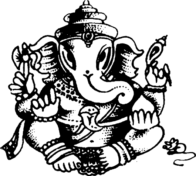Holi or colors festival
“Holi hai! Holi hai!” On the full moon between February and March, or the month of phalgun for Hindus, we hear this joyful cry resound. Phalgun is the last month of the year in the Hindu calendar and this festival is highly anticipated in North India. Holi means the end of the cold season because if the winter there (except in the heights of the Himalayas) is less severe than at home, the nights can be freezing. At the time of Holi, everything warms up, it’s a rebirth. And to celebrate it, we sprinkle ourselves with colors like the flowers of spring! It is also the celebration of the victory of Good over Evil.
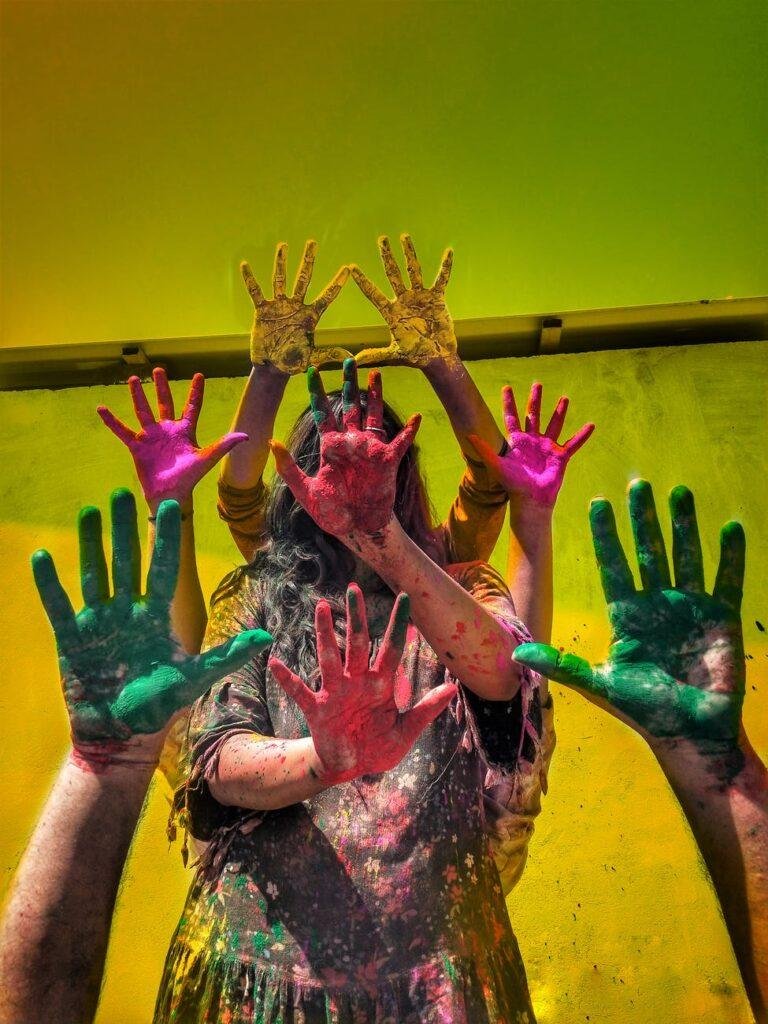
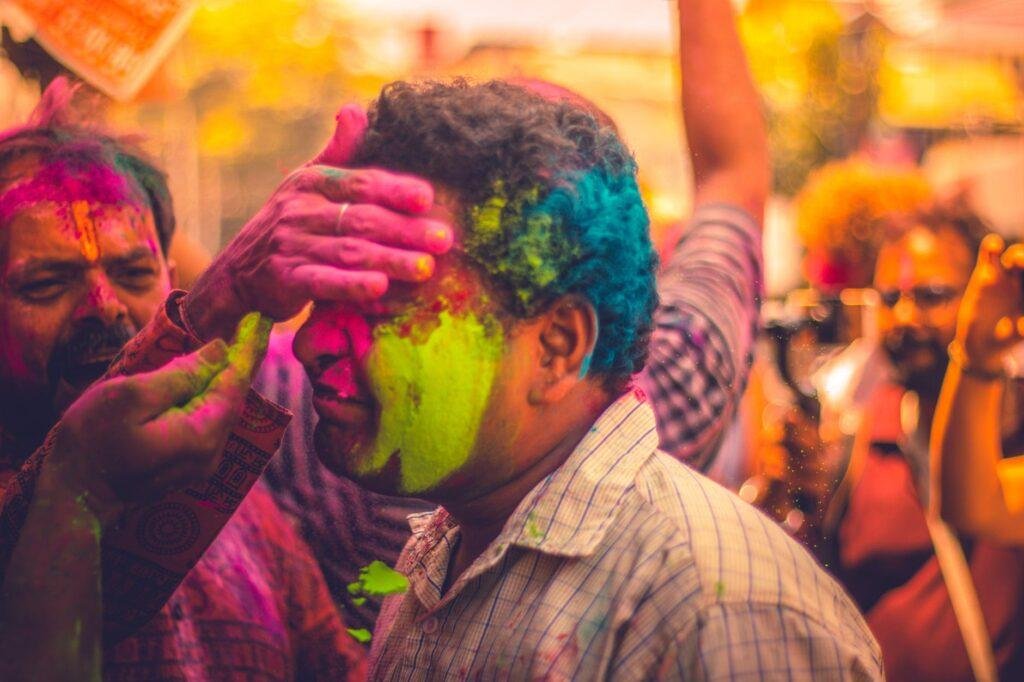
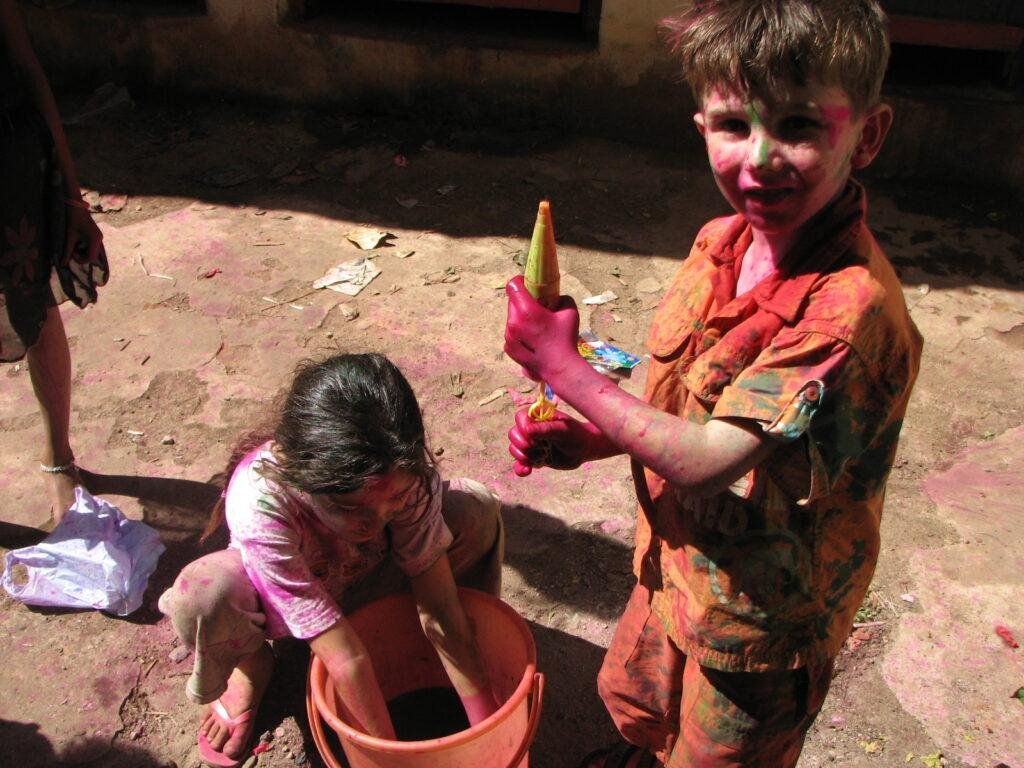

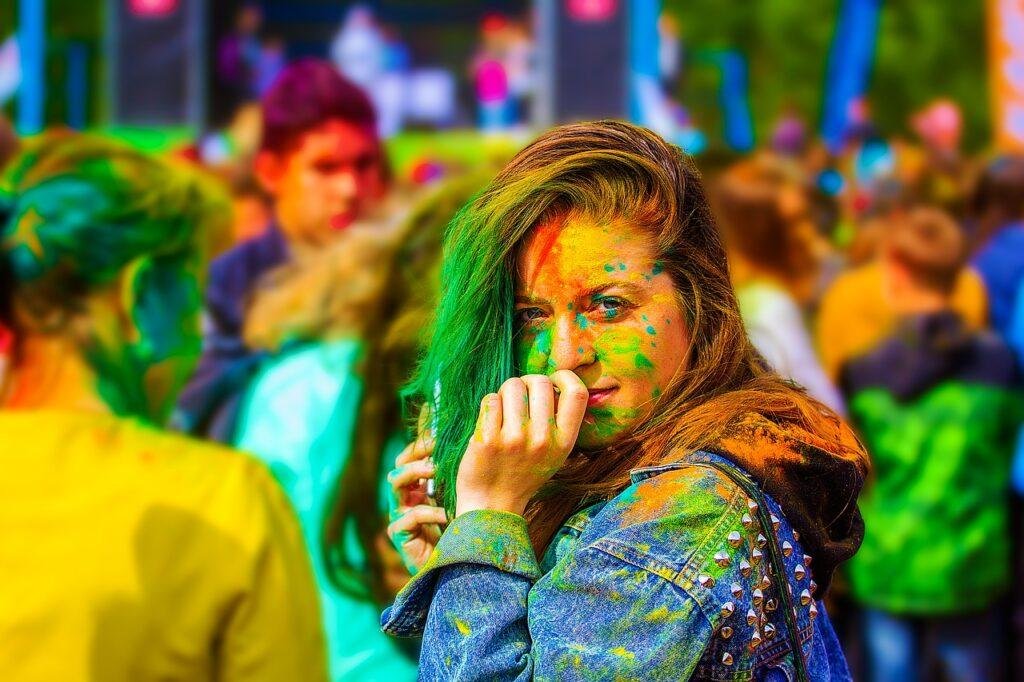
Holi is a kind of carnival where everyone “aggresses” with colored powders and water. Women don’t really or just participate in the confines of the family home. In the cities, Holi is associated with drinking and in the morning, the colors burst with all meaning and everything that passes near the revelers is colored, including storefronts, cows and dogs…. We are preparing for Holi: old clothes because they will be irretrievable and oil anointing to be able to easily remove the colors on the skin. Many tourists leaving India the day after Holi have arrived at the airport with an odd skin tone. In India, it does not surprise anyone but imagine the faces of customs officers in Europe when you arrive purple, blue, green and pink!!
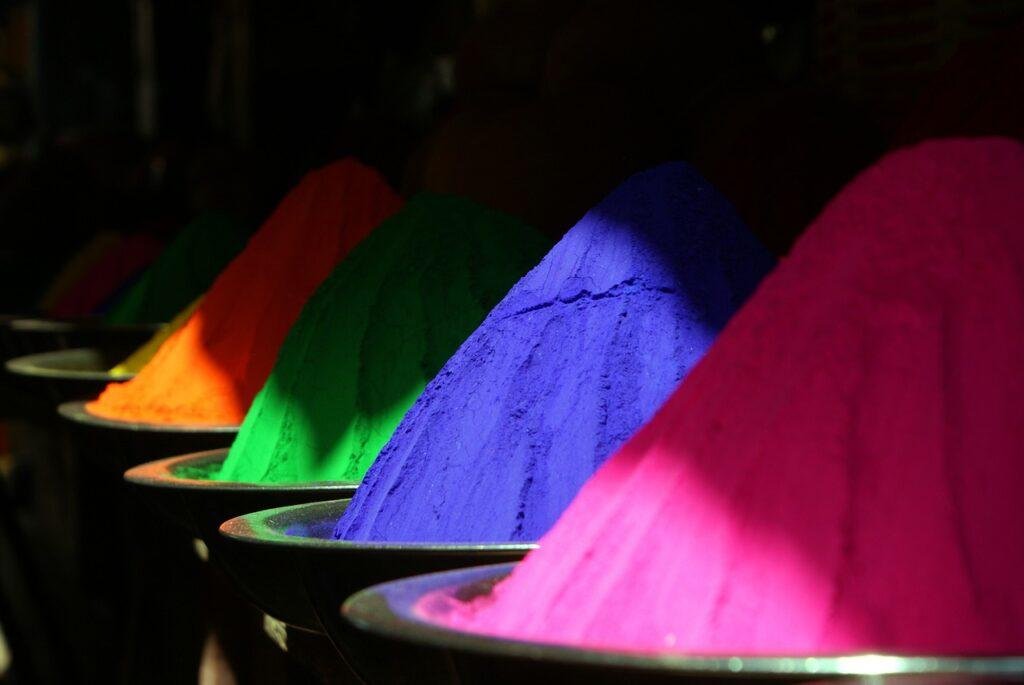
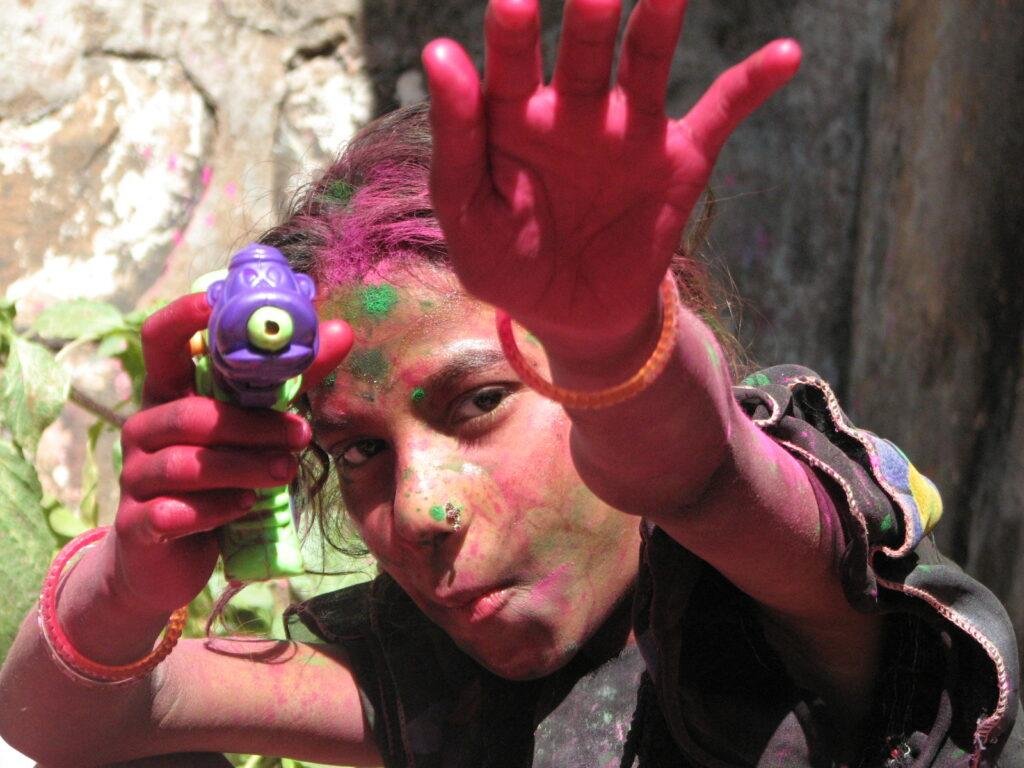
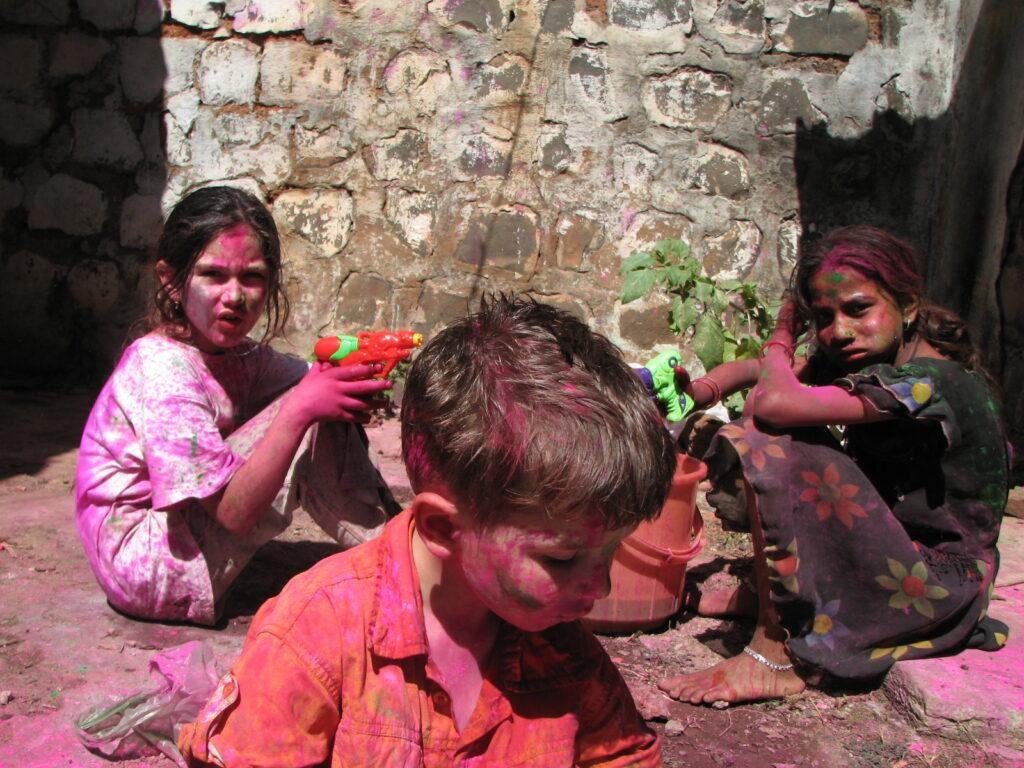
In the villages, the atmosphere is really festive and the children have a great time. At the end of the day, after cleaning up and putting on new clothes, it’s time for reconciliation. We apologize to those we have colored and this time, delicately, we place a little tika powder on their forehead. It is especially in Varanasi that I have seen this custom prevailing.
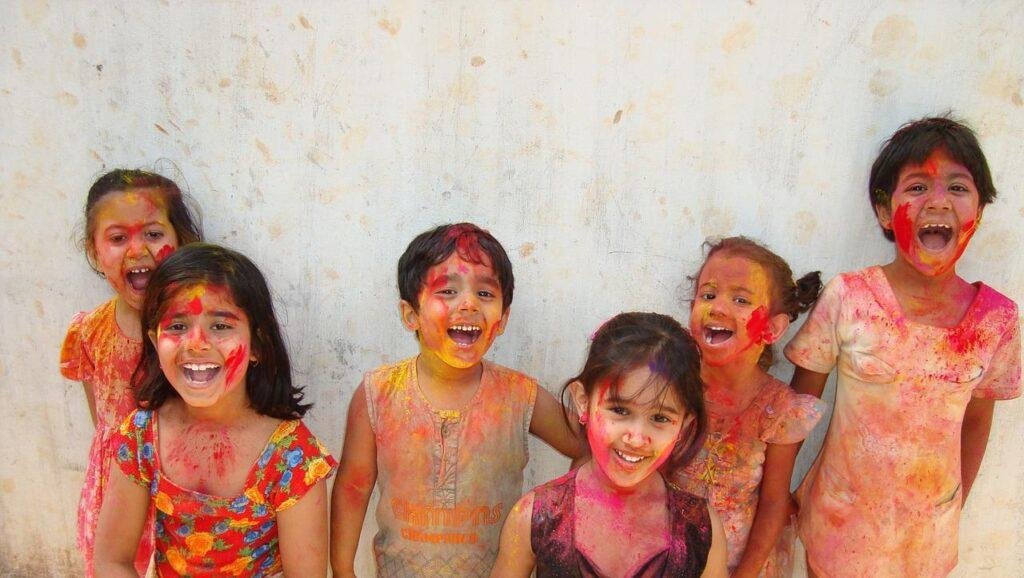
If participating in this colorful festival appeals to you, and especially if you are a woman, choose villages rather than cities because tourists are considered a prime target there. In the villages, on the other hand, you can fully enjoy this unique carnival for unforgettable moments.
